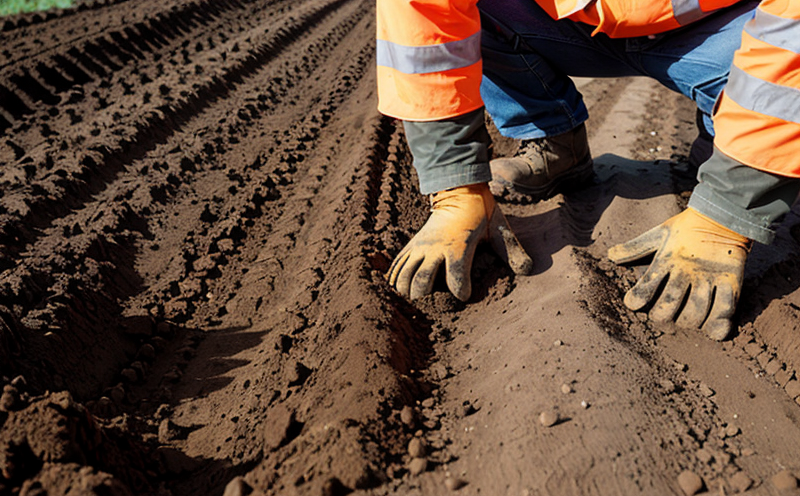Soil compaction inspection
In the construction and building sector, soil compaction is a critical factor that impacts the stability, durability, and safety of structures. Properly compacted soils ensure the foundation provides adequate support for buildings, prevent settlement issues, reduce structural movement, and enhance drainage performance. Soil compaction testing is essential to verify that the soil meets design specifications and regulatory requirements.
Soil compaction inspection involves assessing the density and strength of the soil mass to determine its ability to bear loads and resist deformation under pressure. This process ensures compliance with international standards such as ISO 17892-5:2016, which provides methods for determining the density of compacted fill materials.
The first step in soil compaction inspection is to select a representative sample. This involves digging test pits or using coring devices to obtain undisturbed samples from different depths and locations within the construction area. The samples should be free from contamination, ensuring accurate results.
Once collected, the samples are prepared for testing by drying them in an oven at specified temperatures. After reaching equilibrium moisture content, the samples undergo several tests including BS 1377: Part 4 (1990) which outlines procedures for determining the density and moisture content of soils. Additionally, the ASTM D248-16 standard provides guidance on using the vibrating table method to determine the optimum water content and maximum dry density.
The most common methods used in soil compaction inspection include:
- Vibroprobe Test: This method uses a probe equipped with vibrating elements that measure the resistance to penetration of the probe into the soil. It provides an indication of the degree of compaction at various depths.
- Nuclear Density Gauge (NDG): NDG devices use radiation to determine the density of compacted soils non-invasively. They are particularly useful for large-scale projects where rapid assessments are required.
- Standard Proctor Test: In this test, a sample is placed in a mold and subjected to incremental blows until it reaches its maximum dry density. The moisture content at which this occurs is then determined.
The results of these tests provide valuable information about the soil's compaction characteristics, helping engineers make informed decisions regarding foundation design and construction practices.
Applied Standards
A number of international standards govern soil compaction testing in construction projects. These include:
- ISO 17892-5:2016 – Methods for determining the density and moisture content of compacted fill materials.
- ASTM D4543-16e1 – Standard test methods for density, water (moisture) content, and degree of saturation of soils in place using the nuclear gauge method.
- BS 1377: Part 4 (1990) – Methods for determining the density and moisture content of soils. This standard specifies procedures for estimating the dry density, water content, and degree of saturation of soil in situ.
The use of these standards ensures that all parties involved in a construction project adhere to internationally recognized practices, thereby enhancing consistency and reliability across various projects worldwide.
Scope and Methodology
| Method | Description |
|---|---|
| Vibroprobe Test | The Vibroprobe test measures the resistance to penetration of a probe into the soil using vibrating elements. It provides an indication of compaction at various depths. |
| Nuclear Density Gauge (NDG) | NDG devices use radiation to determine the density of compacted soils non-invasively, making it ideal for large-scale projects requiring rapid assessments. |
| Standard Proctor Test | This test involves placing a soil sample in a mold and applying incremental blows until the maximum dry density is achieved. The moisture content at this point is then determined. |
The methodology for conducting soil compaction inspections typically follows these steps:
- Site preparation: Ensure that the area around the test pit or coring site is free from obstructions and disturbances.
- Sampling: Collect representative samples using appropriate equipment such as augers, coring devices, or hand tools.
- Sample conditioning: Dry the collected samples in an oven to reach equilibrium moisture content.
- Testing: Perform the selected compaction tests on the prepared samples according to the specified procedures outlined in relevant standards.
- Data analysis: Interpret the results and compare them against design specifications or regulatory requirements.
The accuracy of soil compaction inspection is crucial for ensuring that construction projects meet safety and performance criteria. By adhering to established methods and international standards, we can provide reliable data that supports informed decision-making throughout the project lifecycle.
International Acceptance and Recognition
- CEN member countries recognize soil compaction testing methods specified in ISO standards such as ISO 17892-5:2016.
- The United States follows the recommendations provided by ASTM D4543-16e1 and other relevant American standards when conducting soil compaction tests.
- UK construction projects adhere to British Standards such as BS 1377: Part 4 (1990), which is widely accepted globally for its comprehensive approach to determining the density of compacted soils in place using nuclear gauge methods.
The consistent application of these internationally recognized methods ensures that soil compaction inspections are performed consistently across different regions and countries, facilitating better collaboration among professionals from various backgrounds.





